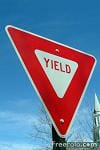
What Is Yield On Cost?
When investing in dividends, an important idea is “yield on cost.” If you’ve never heard this phrase before, it is OK, but it is terribly important to understand. Yield on cost is basically a short way to say: “The current return you are getting on a security compared to the initial cost you paid for it.” If this sounds confusing, then please continue reading because it is an easy concept to understand, but just a bit wordy to explain.
Yield On Cost Example
Let’s consider the following scenario: You purchase a stock for $10.00 that pays a 3% annual dividend ($0.30). That means you will be getting ~$0.075 each quarter. After a year, let’s say that the stock price appreciates to $12.00 after a year.
Well, the company had a great year, and in the interest of attracting investors, they decide that they want to raise the dividend to $0.36 a year to make it 3% again (remember, the stock price is now $12.00 so the dividend of $0.30 is now 2.5% rather than 3%). The dividend is now $0.36 each year! Great, so now you are earning 3% again, right? WRONG!
Don’t forget, you bought the stock for $10.00, not $12.00! So you are now getting a dividend of $0.36 on $10.00 or 3.6%. What does this mean? Your yield on cost is 3.6%! Now, any stocks you purchase at $12.00 will be earning 3% dividends, but any that you had purchased at $10.00 are now earning a whopping 3.6%. This is why yield on cost is so important, and this is why the current yield of a stock isn’t very important in the long run compared to companies that are constantly raising their dividends. Eventually, your yield on cost will obliterate any current yield you can find on a stock.
Companies That Can Afford To Pay
The other beautiful thing about yield on cost is that the good companies that you invest in with this methodology are the ones that tend to have low payout ratios. What this means is that the money the company is paying out as dividends does not represent a huge percentage of their earnings, which tends to be a problem with high yielding dividend stocks. It will take a while for your yield on cost to be competitive with high yield stocks, but that is healthy, and the stability cannot be matched.
The next time you are eyeing a high yield dividend stock, consider these things:
- Can the company afford to consistently pay out this dividend?
- Does the company have a history of lowering dividends?
- Does the company have a history of keeping dividend growth stagnant?
- Will the payout ratio prevent the company from growing competitively?
- Will the payout ratio force the company’s hand in making unpopular decisions?
Shift Gears & Avoid Neutral, Dividends Should Grow
There are a lot of companies out there with high dividend yields, but fail some of the questions above. A good example is Verizon (VZ). Verizon has a high yield at ~6.5% but their history indicates that they had kept their dividends stagnant for nearly ten years! Does this make Verizon a bad play? We don’t think Verizon is a bad company at all, but we do believe that a yield on cost approach to dividend investing will outperform them over a ten-year cycle, especially if they keep their dividend flat.